Author Emily Reeves Last Updated 2-23-2022
No matter where you are in your gardening journey, you’ve probably heard of the medicinal powers of Echinacea and the pollinator-attracting power of coneflowers. And if you didn’t know echinacea and coneflower was the same thing, you do now! Coneflowers (scientific name Echinacea spp, Ratibida spp..and Rudbeckia spp.) have been a big, beautiful part of the American garden for hundreds of years, and for good reason.
Coneflowers are native to the open prairies and woodlands of nearly the entire eastern half of the United States — from Colorado to the Carolinas, and from New York down to Florida.
Echinacea purpurea Native Plant Range USDA, NRCS. 2020. The PLANTS Database (http://plants.usda.gov, 2 November 2020). National Plant Data Team, Greensboro, NC 27401-4901 USA.
Plus, there are a variety of beautiful species to choose from for nearly any garden, including the classic purple coneflower (echinacea purpurea, also known for its medicinal properties), Black-Eyed Susan (Rudbeckia hirta), and prairie coneflowers (Ratibida columnifera and R. pinnata). All of these coneflower species are great choices for providing colorful summer interest, food for pollinators and native wildflower appeal in perennial gardens. As you can see, there is a wide variety of coneflowers to choose from, but they all offer hardy, sun-loving and pollinator-friendly appeal to a garden.
If you’re ready to add some colorful, native and pollinator-friendly coneflowers to your garden, it’s important to start off on the right foot. Be sure to plant your coneflowers correctly in order to pave the way for healthy plants in the future. Read everything you need to know about planting coneflowers below.
What You Need To Plant Coneflowers
You’ve decided that coneflowers are a must for your garden (we agree). Now it’s time to get ready for planting day! Coneflowers are hardy plants, and planting them in your garden doesn’t require a lot of prep work for most gardeners. Here’s everything you’ll need to plant coneflowers in your garden:
1. The coneflower plants, of course! Take a look at our coneflower for sale.
2. Shovel. Have a sturdy shovel with a pointed tip on hand to dig your planting hole.
3. Compost. Coneflowers love the beneficial microbes, carbon, nutrients and drainage that compost offers. Just mix a few handfuls in with your existing soil.
4. Watering can. Be ready to water in your new coneflowers with a full watering can.
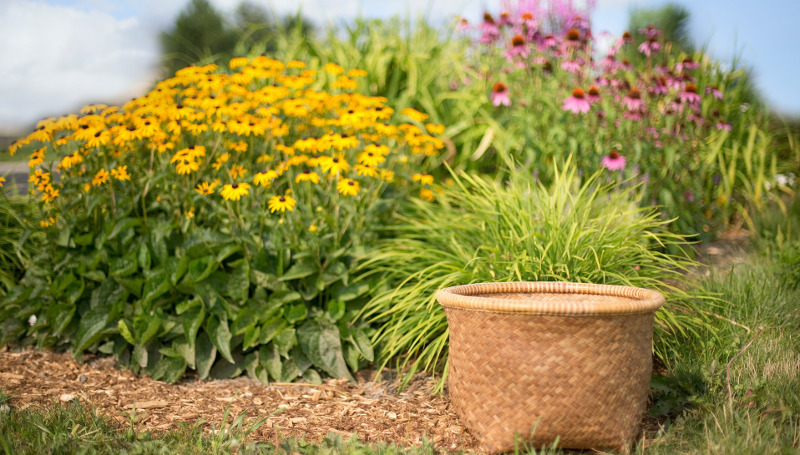
Where to Plant Coneflowers
Coneflowers are native to open prairies and woodlands, which means they love the sun. Be sure to plant your coneflowers where they will get a good amount of sunlight throughout the day. Most coneflowers will be happy with a little bit of shade, but the more sun the better!
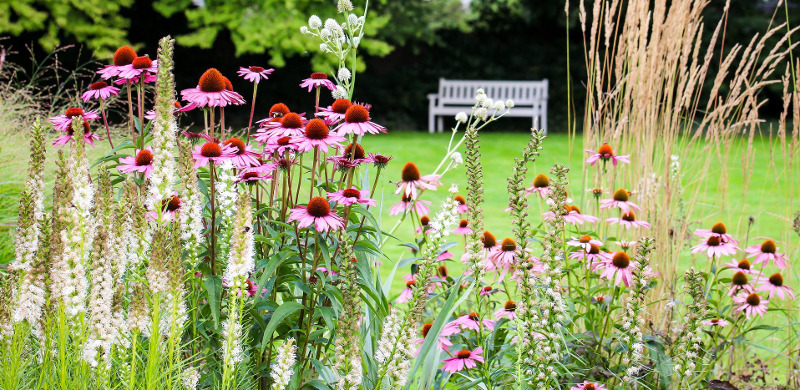
Coneflowers also tend to like quick-draining soils. Avoid planting your coneflowers in a place where there is often soggy soils, standing water, or thick clay. Amend your soil with compost, perlite, vermiculite or sand if you need to increase soil drainage.
Coneflowers thrive in all kinds of soil, but one thing is for sure—they do not like boggy, mucky or constantly wet soil. coneflowers are perfect drought-tolerant plants for low-maintenance gardens. However, if you live in an area where the soil rarely dries out, they might not be right for you.
Coneflower Spacing
Coneflowers can grow up to 3 feet tall, depending on the type, location and care. Generally, you can expect your coneflower to grow around 18 inches tall, and need about 12-18 inches of space for its width. Plant between 12 and 18 inches apart, depending on the type you choose.
Coneflowers will grow up to 18 inches in width, but some will spread by seed around your garden. Prairie coneflowers (Ratibida columnifera and R. pinnata) and Black Eyed Susans (Rudbeckia hirta) are known for spreading by seed and “naturalizing” in gardens, which can be a wonderful thing for prairie and cottage gardens. For this reason, it can be important to give your coneflowers room to grow and spread.
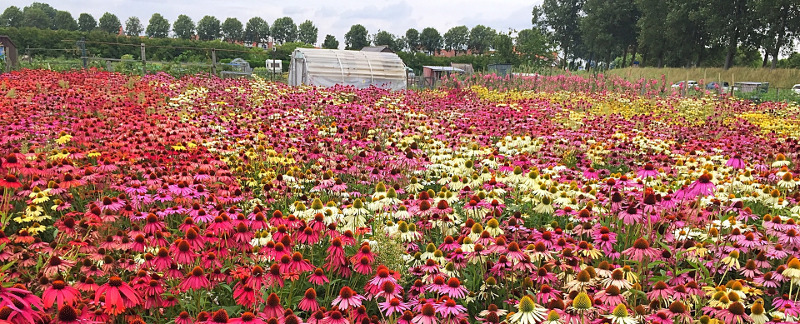
How many coneflowers you plant will depend entirely on the space where you’d like to grow it. But groups of 3 are always a good place to start for any plant! This will offer cohesion and vibrancy in your garden.
Steps to Plant Coneflowers
When planting your coneflowers, follow these steps:
1. Observe your garden and choose an ideal location for your coneflowers. It should have space to grow, and be mostly sunny throughout the day. The location should also be free from standing water or any kind of run off that would lead to soggy soils.
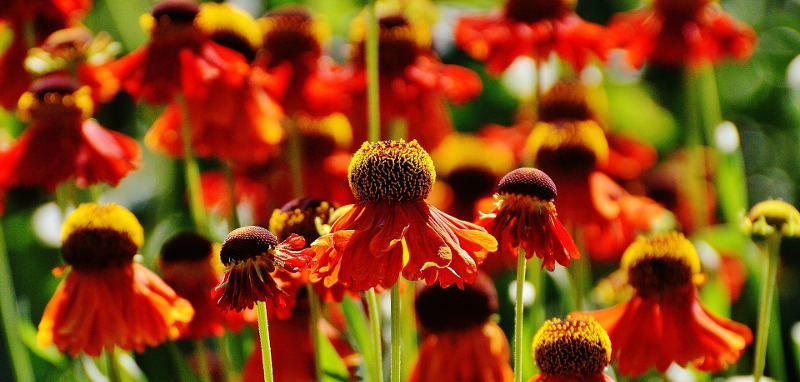
2. Choose the type of coneflowers that are best for your garden and garden goals. Classic and showy Echinacea? Or naturalistic Ratibida? Don’t stress about the choice too much, it’s hard to go wrong in the coneflower family!
3. Dig your hole according to the size of pot you have. Dig it deep and wide enough to provide some extra space in order to backfill the hole with a bit of compost mixed with your native soil.
4. Gently take the coneflower out of its pot. Do not pull the plant by its stem or leaves. Squeeze the pot to get the plant out by the root and soil. If the roots are a bit tight, or “root bound”, gently take your fingers and pull them apart.
5. Place the coneflower in the hole and fill in the remaining space with a mix of compost and your original soil. You may want to use a natural, organic fertilizer to get it off to the right start, too.
6. Water your newly planted coneflower. A nice rule of thumb for newly planted perennials is to water deeply when first planted. How often you water after it is planted will depend on how hot and dry your weather is. In general, you will need to water one-to-two times per week until it is established, then minimal to no additional water is needed (coneflowers like well-drained soils and are drought tolerant).
When to Plant Coneflowers
The best time of year to plant coneflowers is the spring, after the danger of a deep frost has passed. Coneflowers need time to build and grow their deep root system, and planting in the spring allows them to do this. It will also give them time to bloom in the summer. While planting in the spring is ideal, planting in early fall can be great, too. Just be sure to plant your coneflowers several weeks before the first frost date in your region so that they have time to grow healthy roots before winter.
The best time of day to plant any perennial in your garden is generally morning or evening. Planting in the heat of the afternoon is not recommended because the heat can create less-than-ideal conditions for your brand new plant.
If you are planting on a hot day in the summer, be mindful that you provide plenty of water to keep the plant healthy and happy until cooler temperatures arrive. You may even consider planting it in a location with some shade to keep it from getting damaged by the sun. If possible, choose a cloudy day for planting in the summer.
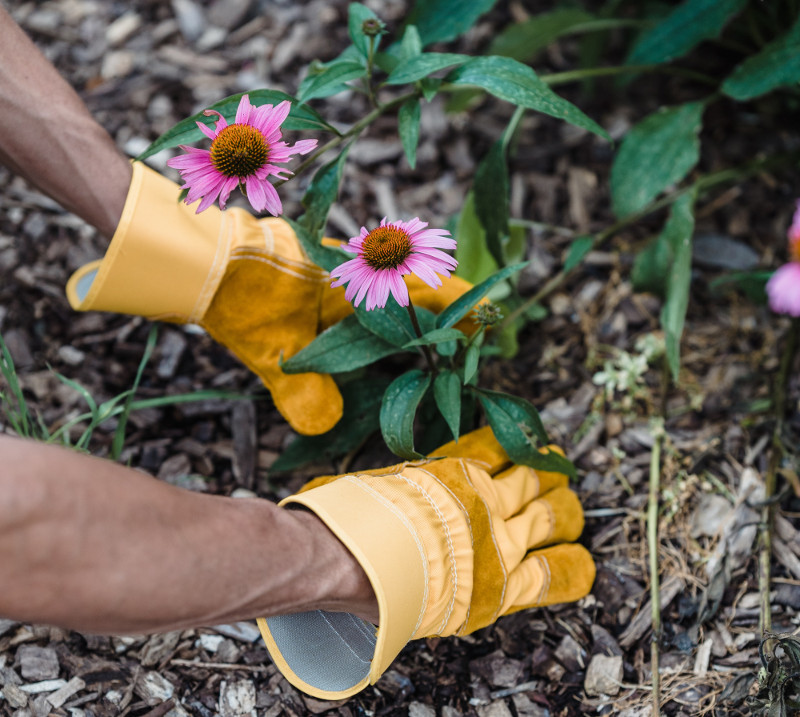
Transplanting Coneflowers
Coneflowers are best transplanted or moved in the early spring, right as the soil is softening and warming up. They can also be transplanted in early fall, when temperatures are lower and the sun is not as harsh as it is in the summer. Transplanting coneflowers in the summer is not recommended.
You can transplant your coneflowers by dividing them after allowing about three or four years of growth. Or, you can often move an entire plant from one spot in your garden to another. As long as you take care to transplant at the right time of year, and are able to get enough of the healthy root system for a healthy transplant, you should be able to replant your coneflowers without any problems.
Most types of coneflowers are drought resistant because they have deep tap roots. Echinacea purpurea roots are known to grow as deep as 5 feet! When you are transplanting and dividing your coneflowers, be sure to dig deeply and get as much of the root system as you can. You will not be able to get the whole root system, but as long as you can get about a foot of root growth, your transplant should be healthy.
Follow the steps in the “Steps to Plant Coneflowers” section above once you have your coneflower plant divided and ready to transplant.
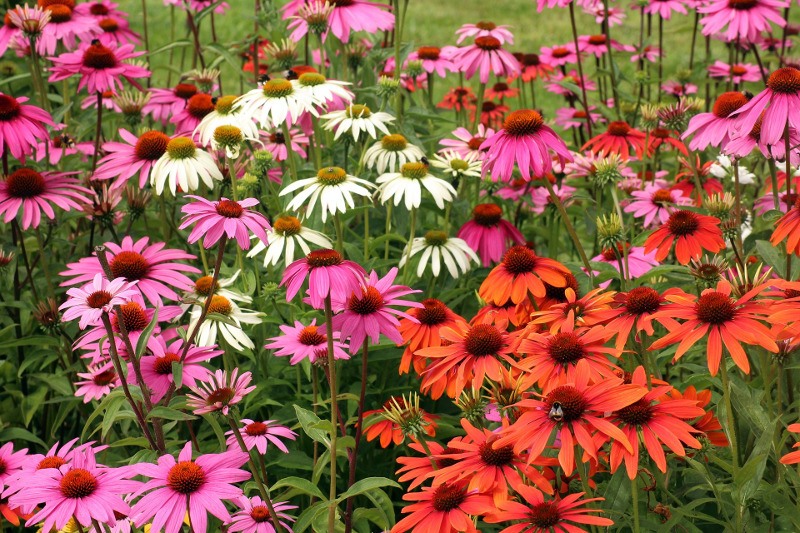
Growing Coneflowers from Cuttings
Coneflowers can also be propagated by cutting. In order to grow from a cutting, dig down along the edge of an established plant until you see a thick root with a healthy sprout that is growing out of the top. You will need to cut a 1-3” section of root with a healthy sprout to grow a coneflower from a cutting.
Water and protect this cutting in a mixture of sand and peat for a few weeks. Once new root and plant growth has been growing on your original cutting for a few weeks, transplant it to a container with potting soil. Allow this new plant to grow in the potting soil for another few weeks, and then follow the steps above to transplant into a sunny location in your garden.
Common Questions About Planting Coneflowers
How Do You Harvest And Propagate Coneflower Seeds?
October is about the bet time to gather since the seeds are packed tight and hard to remove at that time. Cut the stems and shake the seedheads into a 5 gallon bucket and see if any come loose. If none break apart and drop seeds, then use a pair of leather gloves to pull apart the seed head and get the seeds (birds use their beaks to break open the seed heads). Once you've harvested the seeds, you can either store them in a fridge or sow them directly into the ground in the fall. Cover with about 1/4 inch of soil.
This page contains affiliate links to products on Amazon. We may receive a commission for purchases made through these links.
 |
Emily Reeves - Published 11-06-2020 |
